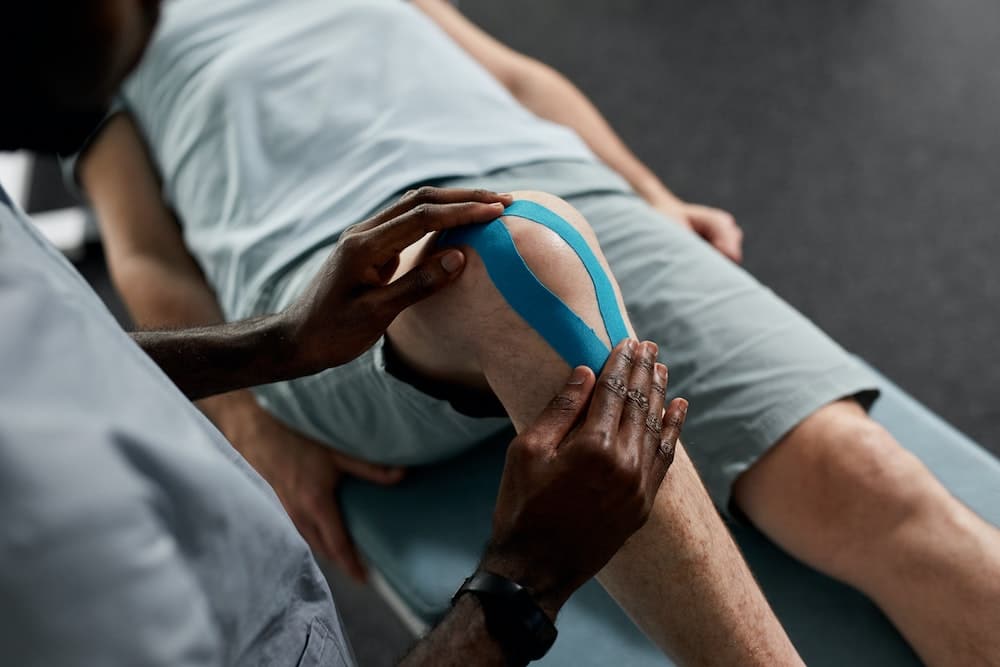Welcome to this in-depth exploration of the intersection between gymnastics and dynamic neuromuscular stabilization (DNS) techniques. As athletes, you all are aware that sports and particularly gymnastics require a great deal of strength, control, and optimal muscle performance. These are all things that can be vastly improved with the right training and technique. In this article, we will delve into how DNS techniques can contribute to enhancing gymnasts’ performance and reducing their recovery time after injuries while enhancing their overall muscle strength.
The Impact of Gymnastics on the Body
Before unpacking the effects of DNS techniques on the body of athletes, we will first explore how gymnastics impacts the body. You all know what a rigorous sport gymnastics is. It demands extreme agility, balance, flexibility, and muscle control. You, as gymnasts, need to be in peak physical condition to perform gymnastics routines that require a great deal of strength and control.
Sujet a lire : What’s the Importance of Tactical Analysis in Optimizing Team Formations in Water Polo?
Gymnastics puts a lot of physical pressure on the body. Training often involves many hours a week, leading to a common occurrence of overuse injuries in gymnasts. Female athletes, in particular, are at a higher risk due to the increased strain on their bodies from the sport. Furthermore, the repetition of intense, tight movements can lead to muscle stiffness and increased risk of injury.
DNS Techniques and Gymnastics
Now that you understand the incredible demands gymnastics can put on the body, it’s time to explore how DNS techniques can help. Dynamic Neuromuscular Stabilization is a rehabilitation approach based on the development of movement in children. It aims to bring patients back to their original state of optimal health and mobility, which can be incredibly beneficial for athletes suffering from sports-related injuries.
A voir aussi : What Are the Latest Innovations in Mouthguard Technology for Impact Sports?
DNS exercises use your body’s natural movement patterns to enhance your overall control and strength. This type of resistance training can be particularly helpful for you gymnasts. By improving your movement patterns, DNS training can help you reduce stiffness, maintain better control over your movements, and ultimately, improve your performance.
How DNS Techniques Aid in Recovery
The main aim of DNS techniques is to aid in recovery after injury. This is achieved by retraining the nervous system to improve movement patterns and increase muscle strength. Regaining control and strength in previously injured muscles is a key aspect of recovery for any athlete, but particularly for gymnasts who rely heavily on their muscles for each movement.
You will find that with DNS techniques, your recovery time after an injury can be significantly reduced. This is due to the targeted nature of the exercises, which focus on improving the specific muscles and movements impacted by the injury. By incorporating these exercises into your regular training schedule, you can not only recover more quickly but also reduce the risk of future injuries.
DNS Techniques and Increased Performance
Aside from aiding in recovery, DNS techniques can also play a significant role in increasing a gymnast’s performance. This is because these techniques focus on improving overall body stability and control, two fundamental elements for gymnasts.
As gymnasts, you are required to perform complex movements that require a high level of body control. With improved stability and movement, you can enhance your performance by adding more precision to your routines. Additionally, the increased muscle strength you gain from regular DNS training can give you a competitive edge by allowing you to perform more demanding routines with less risk of injury.
The Role of DNS Techniques in Preventing Injuries
Lastly, DNS techniques are not only beneficial for recovery after an injury but can also play an essential role in preventing injuries in the first place. By improving body control and muscle strength, you can decrease the chances of overuse injuries that are common in gymnastics.
Preventing injuries is crucial for any sport, but it is particularly important in gymnastics where the risk of injury is high due to the intense physical strain of the sport. By incorporating DNS techniques into your regular training, you can reduce your risk of injuries, enhancing your performance and extending your athletic career.
This marks the end of our exploration of the effects of DNS techniques on recovery and performance in gymnastics. We hope you found it informative and that it gave you a better understanding of how you can use these techniques to improve your training, recovery, and performance.
DNS Techniques and Boosting Core Stability
One key aspect of dynamic neuromuscular stabilization (DNS) techniques revolves around the improvement of core stability. This is a crucial aspect for gymnasts, particularly female gymnasts, as the sport demands a high level of control and strength in the core muscles. These muscles are central to almost all movements in gymnastics, from simple static stretches to more complex movements that require a wide range of motion.
In a study detailed on Google Scholar, it was found that enhanced core stability can lead to better postural control, which is a fundamental requirement for gymnastic success. DNS techniques emphasize the role of the central nervous system in managing movement and postural stability. By focusing on neuromuscular training, a gymnast can improve their control over their movements, thus reducing the risk of injury.
Enhanced core stability also aids in the overall athletic performance of gymnasts. By having a strong and stable core, gymnasts can improve their strength, power, and functional movement. This can lead to more complex and precise routines, giving gymnasts a competitive edge.
Enhancing Flexibility with DNS Techniques
Flexibility is another critical attribute for gymnasts. DNS techniques are beneficial in this regard as well. In the context of gymnastics, flexibility is often linked with a broader range of motion and improved posture. A study in the Sports Med journal highlighted the importance of flexibility and range of motion for gymnasts, specifically in preventing soft tissue injuries.
DNS training can help improve flexibility by promoting efficient functional movement patterns. This improvement can reduce muscle stiffness, often brought on by repetitive, intense gymnastics movements. By including DNS techniques in a training program, gymnasts can experience an increased range of motion and flexibility, leading to more nuanced performances and a decreased injury risk.
Conclusion
In conclusion, dynamic neuromuscular stabilization techniques offer a multitude of benefits for gymnasts. From enhancing core stability and flexibility to aiding in recovery after injuries, these techniques can significantly improve an athlete’s performance and extend their career.
Additionally, these techniques can aid in preventing injuries, a particularly poignant benefit for a sport like gymnastics, where athletes are at high risk. By focusing on enhancing body control and muscle strength, DNS techniques help reduce the risk of overuse injuries common in the sport.
The research from Google Scholar and Physical Therapy journals, among others, supports the benefits of incorporating DNS techniques into the regular training of both male and female gymnasts. As the world of gymnastics continues to evolve, it is increasingly clear that techniques such as DNS will play a pivotal role in shaping the future of the sport.
In a world where athletic performance is often the difference between victory and defeat, every advantage counts. As we’ve explored in this article, DNS techniques can offer gymnasts a competitive edge, whether by enhancing performance, hastening recovery, or preventing injuries. As such, every gymnast, coach, and trainer should consider including these techniques in their training program.






